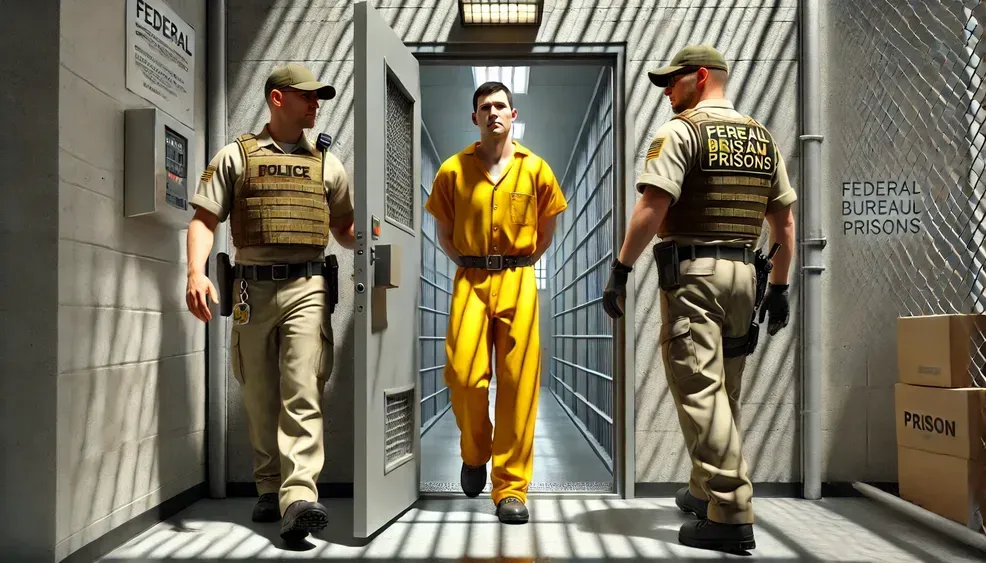The proliferation of drug use within the Bureau of Prisons (BOP) has reached epidemic levels. Yet, while much attention is given to the presence of drugs, the secondary effects—corruption, violence, and recidivism—are often overlooked. The BOP’s response remains a blunt instrument: sweeping prohibitions and punitive measures that fail to address the root causes of substance abuse. The current system is ineffective, and worse, it perpetuates the very cycle it aims to break.
Instead of rehabilitation, the demand for contraband fuels an underground economy where correctional officers, lured by the potential to earn several times their official salary, participate in smuggling operations. Some officers, content with their illicit earnings, do only the bare minimum required to keep their positions. Meanwhile, incarcerated individuals caught with drugs face sanctions that do little to curb their addiction or deter future use. The system, as it stands, is broken.
A Model for Effective Drug Treatment Within the BOP
Despite the failures of the BOP during the COVID-19 pandemic, one concept that emerged—the Recovery Unit—could serve as the foundation for a more effective approach to drug treatment. Initially designed to isolate individuals with active COVID cases, a similar model could be applied to those struggling with drug addiction.
Currently, the only significant drug treatment program within the BOP is the Residential Drug Abuse Program (RDAP). While RDAP provides structured treatment, it is limited to individuals with three years or less remaining on their sentence. Further restrictions, such as excluding those with violent offenses, significantly reduce participation. As a result, many incarcerated individuals with substance use disorders receive no meaningful intervention.
How the Recovery Unit Model Would Work
Under this proposed system, any individual who fails a urinary analysis (UA), is found intoxicated, or is caught in possession of drugs would be immediately transferred to a designated recovery unit. This unit would function as a controlled environment, operating under lockdown conditions but allowing for structured rehabilitation.
Upon arrival, individuals would undergo thorough searches, be issued standard-issue clothing, and be placed in solitary confinement for the first 48 hours. Following this period, they would progress to a tiered recovery program:
- Level 1: No commissary access, no TV, no phone, and no computer privileges. Family members would be notified of the individual’s placement in recovery, ensuring they are aware of potential manipulative requests for money.
- Level 2-4: Gradual reintroduction of privileges, contingent on class attendance, passing weekly drug tests, and abstaining from any form of drug use.
- Level 5: Eligibility for transfer back to the general population, based on demonstrated progress.
Key to this model’s success is the complete restriction of outside influence. Meals, laundry, and all supplies would be delivered under strict oversight. Staff would be responsible for thoroughly searching all incoming goods, ensuring that drugs do not enter the unit. While maintaining a fully drug-free environment in a large prison may be difficult, securing one controlled unit is a far more achievable goal.
Addressing Logistical Challenges
Allocating a 128-bed unit for this initiative poses challenges, but the benefits far outweigh the logistical difficulties. Individuals completing the program may need to wait for an available bunk in general population, but this delay serves as an additional deterrent against drug use. By keeping drug users separated for an extended period, the BOP would naturally reduce the consumer base for prison drug dealers, weakening the contraband economy.
Moreover, individuals transferred for drug-related disciplinary issues could be placed directly into the recovery unit upon arrival, reinforcing its role as both a deterrent and a pathway to rehabilitation. The uncertainty surrounding an individual’s length of stay would make the recovery unit an undesirable destination, further discouraging drug use.
Solutions
- Implement Recovery Units Nationwide: Designate a specific unit in each federal facility for immediate drug rehabilitation and forced sobriety.
- Enforce Strict Contraband Policies: Ensure all meals, laundry, and supplies are meticulously searched to maintain a drug-free environment.
- Institute a Tiered Rehabilitation System: Require individuals to earn their way back to general population through abstinence, class participation, and drug testing.
- Increase Family Awareness: Notify family members of an individual’s placement in the recovery unit to prevent manipulation for financial gain.
- Direct Disciplinary Transfers to Recovery Units: Automatically place individuals arriving due to drug-related infractions into the program.
- Strengthen Oversight and Accountability: Implement stringent monitoring of correctional staff to reduce corruption and contraband smuggling.
By consolidating drug treatment efforts into a single, controlled environment, the BOP can move beyond ineffective blanket prohibitions and punitive measures. This model not only forces sobriety but also provides a structured path to rehabilitation—one that could drastically reduce drug use, curtail prison corruption, and ultimately lead to better post-release outcomes for those struggling with addiction.
